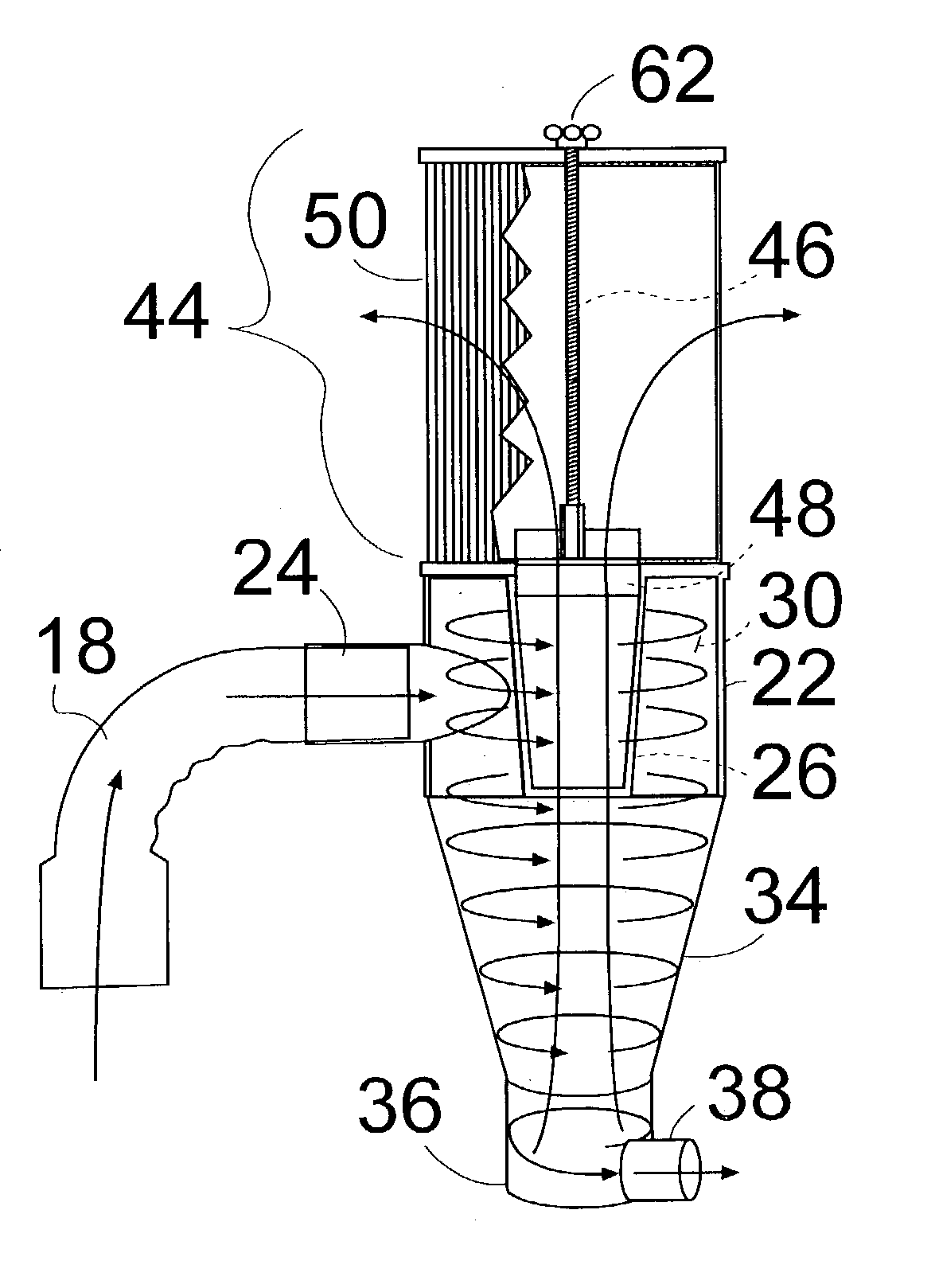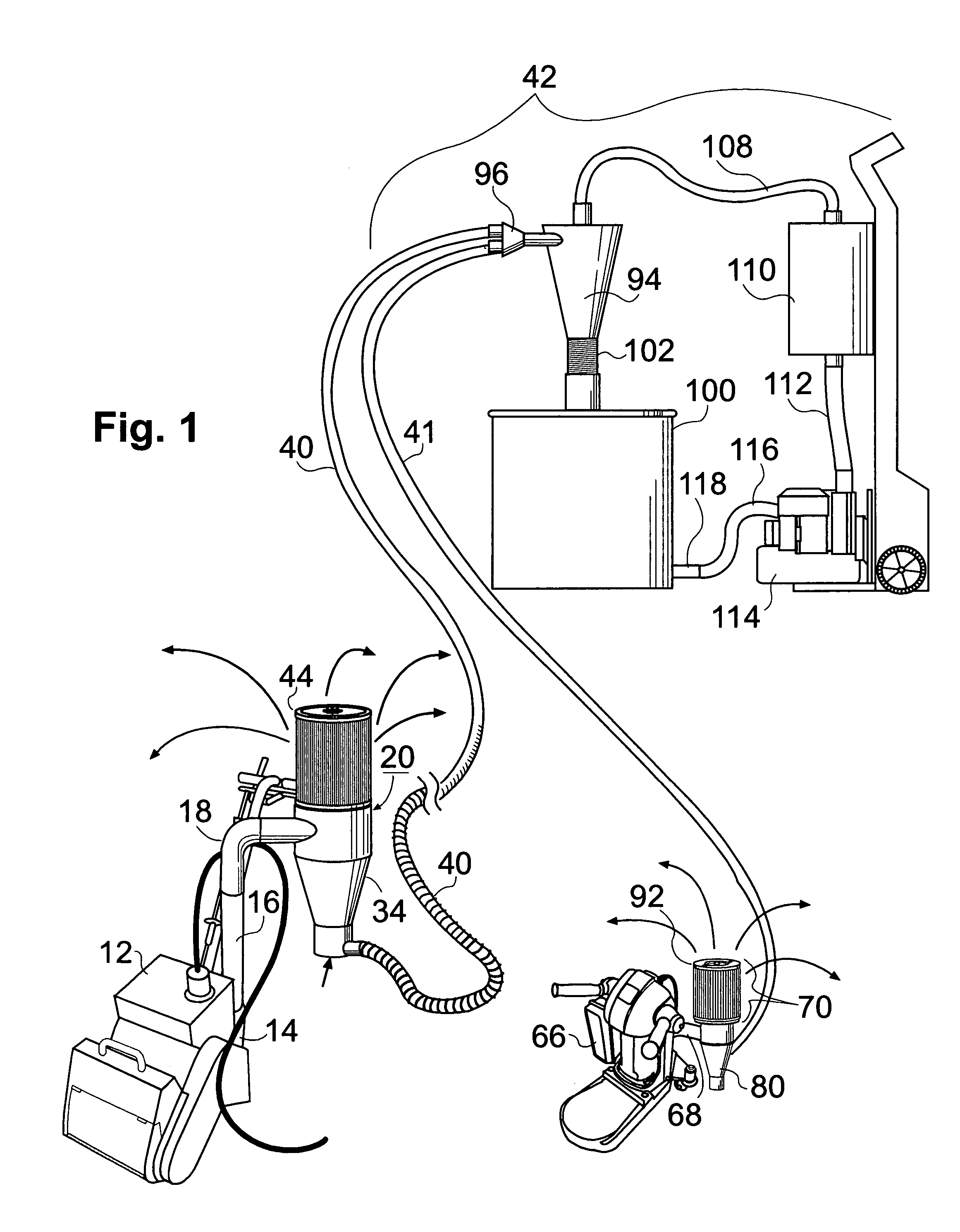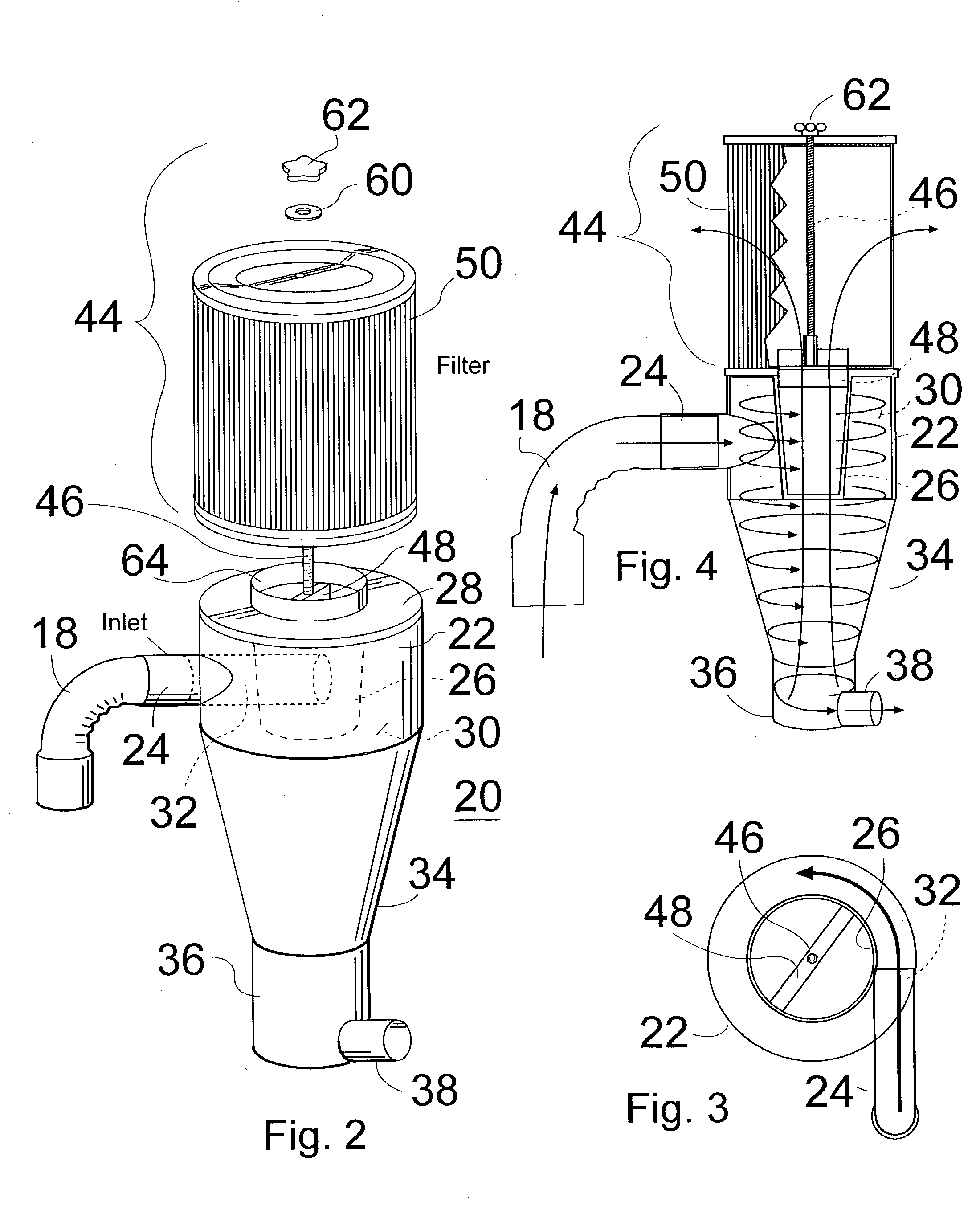Dust collection system
a dust collection and cyclonic separator technology, applied in the direction of vortex flow apparatus, filtration separation, separation process, etc., can solve the problems of cumbersome, inconvenient, cumbersome, etc., and achieve compact and efficient dust collection, reduce the inherent fire or explosion hazard of dust collection equipment, and reduce power requirements
- Summary
- Abstract
- Description
- Claims
- Application Information
AI Technical Summary
Benefits of technology
Problems solved by technology
Method used
Image
Examples
Embodiment Construction
[0024] Now with reference to the Drawing, FIG. 1 shows a dust collection system according to an embodiment of this invention in which dust is separated from the air flow at the tool or machine, with the air being cleaned and returned to the ambient in the vicinity of the tool and with the dust being transported on a smaller volume air flow to a remote collection site.
[0025] a dust generating machine or tool, here a floor sanding machine 12, has a built-in exhaust blower 14 that vacuums up any sanding dust produced and discharges it upwards through an upright pipe 16. An inlet-connection ell 18 is mounted at a top end of the pipe 16, and a compact cyclonic separator 20 is supported on the ell 18. In this embodiment, the cyclonic separator 20 has a barrel or drum 22 at its upper end. The cyclonic separator can be described with additional reference to FIGS. 2, 3, and 4. An inlet pipe 24 that fits into the ell 18 extends though the barrel 22, as will be discussed later. a tubular baffl...
PUM
| Property | Measurement | Unit |
|---|---|---|
| Diameter | aaaaa | aaaaa |
| Volume | aaaaa | aaaaa |
| Flexibility | aaaaa | aaaaa |
Abstract
Description
Claims
Application Information
 Login to View More
Login to View More - R&D
- Intellectual Property
- Life Sciences
- Materials
- Tech Scout
- Unparalleled Data Quality
- Higher Quality Content
- 60% Fewer Hallucinations
Browse by: Latest US Patents, China's latest patents, Technical Efficacy Thesaurus, Application Domain, Technology Topic, Popular Technical Reports.
© 2025 PatSnap. All rights reserved.Legal|Privacy policy|Modern Slavery Act Transparency Statement|Sitemap|About US| Contact US: help@patsnap.com



